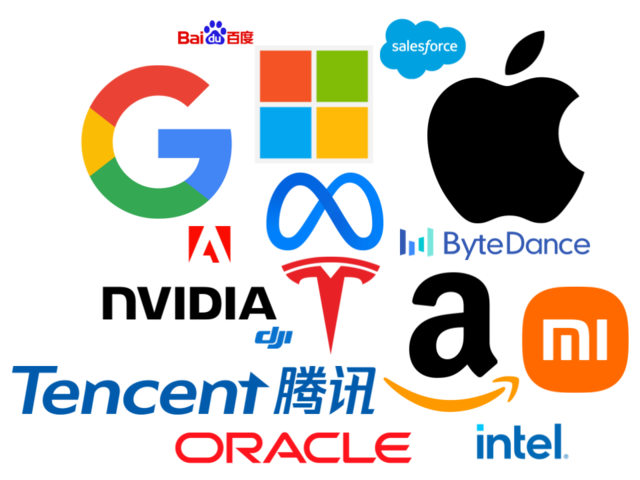Introduction
Samsung, a name synonymous with cutting-edge technology and innovation, has a history that spans over eight decades. What began as a modest trading company in South Korea has grown into one of the world’s leading technology conglomerates. The journey of Samsung is a testament to visionary leadership, relentless innovation, and a commitment to pushing the boundaries of what’s possible. In this article, we’ll take a closer look at the remarkable evolution of Samsung, from its humble beginnings to its current status as a global tech giant.
Over the years, Samsung has not only embraced innovation but has often set the pace for the entire tech industry. From pioneering advancements in the semiconductor industry to revolutionizing consumer electronics with products like the Galaxy series, Samsung’s impact on technology is undeniable. As we explore its journey, we’ll discover how this company’s ability to adapt and lead in a rapidly changing tech landscape has made it a household name worldwide. Whether you’re a tech enthusiast or simply curious about the history of a tech giant, Samsung’s story is a captivating tale of persistence, ingenuity, and the pursuit of excellence.
If you’d like to dive deeper into this subject, there’s more to discover on this page: Investing in Apple Stock (AAPL)
The Early Years: A Trading Company
Samsung’s story begins in 1938 when Lee Byung-chul founded a small trading company in Daegu, Korea. Initially, the company dealt in groceries, noodles, and other commodities. Over the years, it diversified into various industries, including textiles, food processing, and insurance. Despite its modest origins, Lee Byung-chul had a vision of transforming Samsung into a leading business empire.
Samsung’s journey is a remarkable testament to vision and perseverance. In the modest beginnings of that small trading company in Daegu, Korea, lay the seeds of what would become a global conglomerate. Lee Byung-chul’s foresight was nothing short of visionary. He understood that diversification was key to long-term success, and this insight fueled Samsung’s expansion into diverse industries.
As Samsung ventured into textiles, it not only contributed to economic growth but also played a pivotal role in transforming Korea’s industrial landscape. The company’s innovative spirit wasn’t confined to one sector, as it continued to evolve, branching out into food processing, insurance, and more. Each diversification represented a strategic move, further solidifying Samsung’s position in various markets.
Lee Byung-chul’s vision was not limited to short-term gains; he aimed to create a business empire that would stand the test of time. This forward-thinking approach is evident in Samsung’s commitment to innovation and adaptability. It didn’t just adapt to change; it thrived on it.
Over the decades, Samsung’s trajectory has been characterized by groundbreaking developments, from electronics and semiconductors to telecommunications and more. It became a pioneer in technological advancements, shaping the way we live, work, and communicate. The company’s dedication to research and development transformed it into a global technology leader.
Today, Samsung stands as a symbol of excellence and innovation. Its journey from a small trading company to a global powerhouse is a testament to the relentless pursuit of progress. The story of Samsung serves as an inspiration for aspiring entrepreneurs, highlighting the power of vision, adaptability, and resilience in building an enduring legacy. Lee Byung-chul’s audacious dream has not only been realized but continues to evolve, shaping the future of technology and business on a global scale.
For a comprehensive look at this subject, we invite you to read more on this dedicated page: Investing in Apple Stock (AAPL)

Entry into Electronics: A Pioneering Move
In the late 1960s, Samsung made a strategic move into the electronics industry. This decision marked a pivotal moment in the company’s history. Samsung’s early ventures in electronics included black-and-white televisions and home appliances. By the 1970s, they had established themselves as a reputable manufacturer of consumer electronics in South Korea.
During this era, Samsung’s commitment to innovation became evident as they introduced color televisions and, later, microwave ovens. This pioneering spirit laid the foundation for their future dominance in the global electronics market. Samsung’s dedication to quality and innovation continued to drive their success throughout the decades, leading to the diverse range of products and technologies we associate with the brand today.
Explore this link for a more extensive examination of the topic: History of HP | HP® Tech Takes

Entering the Global Market
Samsung’s ambitions were not limited to the Korean market. In the 1980s, they embarked on an ambitious journey to expand globally. This expansion involved setting up manufacturing plants and research facilities in different parts of the world. Samsung began exporting its products to international markets, establishing a presence in Europe, North America, and Asia. This marked the beginning of Samsung’s rise as a global player in the tech industry.
Samsung’s global expansion was marked by its dedication to innovation and diversification. During the 1990s and early 2000s, the company aggressively entered various technological sectors, including telecommunications, semiconductor manufacturing, and consumer electronics. This diversification not only expanded Samsung’s product portfolio but also solidified its status as a tech giant capable of competing on multiple fronts.
One of the pivotal moments in Samsung’s history was its entry into the mobile phone industry. In 1993, Samsung produced its first mobile phone, and this marked the beginning of its journey towards becoming a leader in the smartphone market. Through relentless research and development efforts, Samsung introduced a series of innovative smartphones that would revolutionize the way we communicate, work, and entertain ourselves.
Another significant factor in Samsung’s evolution was its commitment to research and development. The company invested heavily in cutting-edge technologies, fostering a culture of innovation. This led to breakthroughs in various fields, such as the development of advanced semiconductor technology and the creation of high-quality displays. Samsung’s contributions to the tech industry extended beyond its own products; it became a major supplier of components and technologies to other companies worldwide.
As Samsung continued to grow, it didn’t shy away from competition. Instead, it embraced it. The tech giant engaged in fierce rivalries with other industry leaders, challenging them in various markets. These battles resulted in innovative products and services that benefited consumers globally.
Samsung’s evolution from a trading company to a tech giant is a testament to its unwavering commitment to excellence, innovation, and adaptability. Today, Samsung is not only a household name but also a symbol of cutting-edge technology and global success. Its story serves as an inspiration for companies aspiring to make a mark in the ever-evolving world of technology and business.
To delve further into this matter, we encourage you to check out the additional resources provided here: The History of Samsung (1938-Present)

Diversification and Innovation
Samsung’s success in consumer electronics was just the beginning. The company’s philosophy of diversification and innovation continued to drive its growth. Samsung entered various sectors, including shipbuilding, construction, and finance. However, it was their relentless pursuit of innovation in the tech sector that set them apart.
Samsung’s foray into diverse sectors not only demonstrated its adaptability but also contributed significantly to South Korea’s industrialization. The company’s impact on shipbuilding, construction, and finance was profound, reshaping these industries. Yet, it was in the tech sector that Samsung truly excelled. Their commitment to innovation led to groundbreaking developments in semiconductors, telecommunications, and display technology. Samsung’s leadership in these areas not only fueled its own growth but also had a ripple effect on the global tech landscape. From pioneering mobile phones to developing cutting-edge display technologies like OLED, Samsung has consistently pushed the boundaries of what’s possible. As we delve deeper into their journey, we’ll uncover the pivotal moments and innovations that have made Samsung a true trailblazer in the world of technology.
Looking for more insights? You’ll find them right here in our extended coverage: Samsung US | Mobile | TV | Home Electronics | Home Appliances …

Smartphones and Beyond
Samsung’s foray into the smartphone market in the early 2000s was a game-changer. The release of the Samsung Galaxy series marked the company’s ascendancy in the mobile industry. Samsung’s smartphones became known for their cutting-edge features, impressive displays, and sleek designs. The competition with tech giants like Apple intensified, leading to a series of groundbreaking innovations.
Samsung’s entry into the smartphone market during the early 2000s heralded a seismic shift in the tech landscape. With the introduction of the Samsung Galaxy series, the company rapidly rose to prominence in the mobile industry. These devices weren’t just phones; they were technological marvels that redefined our relationship with communication and information.
One of the hallmarks of Samsung’s smartphones has been their commitment to pushing the envelope of innovation. With each new iteration, they brought cutting-edge features, stunning displays, and sleek designs to the market. The Galaxy series, in particular, became synonymous with excellence, setting a new standard for what consumers could expect from their handheld devices.
As Samsung and Apple engaged in a fierce rivalry, the world watched in anticipation. This competition didn’t just fuel market dynamics; it ignited a fire of innovation. Both companies pushed the boundaries of what was possible in the smartphone arena, resulting in a series of groundbreaking developments that left an indelible mark on the industry.
From the race for superior camera technology to the quest for longer-lasting battery life, Samsung’s determination to outdo itself with each new release led to advancements that benefited consumers worldwide. The rivalry not only fueled technological progress but also provided consumers with a wider range of options and innovations that catered to their evolving needs and preferences.
Samsung’s presence in the smartphone market has not only reshaped the industry but also demonstrated the company’s unwavering commitment to staying at the forefront of technological advancement. The legacy of the Galaxy series is a testament to Samsung’s ability to evolve, adapt, and continually reinvent itself to meet the demands of a rapidly changing world. As a result, Samsung has become synonymous with innovation, setting the stage for what the future of mobile technology holds.
To expand your knowledge on this subject, make sure to read on at this location: Apple

Leadership and Vision
Throughout its journey, Samsung benefited from visionary leadership. Key figures like Lee Byung-chul, Lee Kun-hee, and more recently, Lee Jae-yong, played pivotal roles in shaping the company’s direction. Their commitment to innovation and a forward-thinking approach propelled Samsung to new heights.
Lee Byung-chul, the founder of Samsung, initially started as a small trading company in 1938. However, his vision extended far beyond that modest beginning. Over the years, Samsung diversified its portfolio, venturing into various industries, including shipbuilding, construction, and petrochemicals. Under the leadership of Lee Byung-chul, the company established a reputation for excellence and resilience, a legacy that continues to guide Samsung today.
In the late 1980s, Lee Kun-hee took the reins and embarked on a radical transformation known as the “New Management.” This strategic shift propelled Samsung into the electronics and semiconductor industries with renewed vigor. Under Lee Kun-hee’s leadership, Samsung became a global giant, excelling in everything from mobile phones to memory chips.
Lee Jae-yong, Lee Kun-hee’s son, has also been instrumental in guiding Samsung’s continued success. He championed initiatives to foster innovation and streamline operations. These leaders’ unwavering commitment to pushing boundaries and embracing change has not only made Samsung a household name but has also solidified its position as an industry leader in technology and innovation. Samsung’s journey serves as a testament to the power of visionary leadership in shaping the destiny of a company and an entire industry.
Don’t stop here; you can continue your exploration by following this link for more details: About Qualcomm | Company Information & History | Qualcomm

Challenges and Controversies
Samsung’s path to success was not without challenges and controversies. Legal battles, product recalls, and issues surrounding corporate governance tested the company’s resilience. However, Samsung’s ability to navigate these challenges and emerge stronger showcased its adaptability and commitment to continuous improvement.
Samsung’s journey to becoming a tech giant was indeed filled with trials and tribulations. One of the most notable challenges was its legal battles, particularly in the realm of patent disputes. The company faced numerous lawsuits, often involving its smartphone and tablet technologies. These legal skirmishes with competitors such as Apple captured headlines and underscored the intense competition within the tech industry.
Product recalls also posed significant hurdles for Samsung. Perhaps one of the most infamous recalls occurred in 2016 when the Galaxy Note 7 faced a widespread battery issue that led to overheating and, in some cases, even explosions. This recall was a major setback for the company, resulting in significant financial losses and damage to its reputation. However, Samsung’s response to this crisis demonstrated its commitment to customer safety and product quality. Subsequent Galaxy devices showcased enhanced battery safety measures, and the company worked diligently to regain consumer trust.
Corporate governance issues also arose within Samsung, with controversies surrounding the Lee family’s influence and control over the conglomerate. These issues raised questions about transparency and accountability. However, Samsung responded by implementing reforms aimed at improving corporate governance practices and addressing concerns about family control.
Through these challenges and controversies, Samsung showcased its ability to adapt and evolve. Rather than succumbing to setbacks, the company used them as opportunities for growth and improvement. Samsung’s commitment to continuous innovation, quality assurance, and ethical practices remained unwavering.
In the face of adversity, Samsung emerged stronger and more resilient, reinforcing its position as a global tech powerhouse. These experiences served as valuable lessons, shaping the company’s corporate culture and reinforcing its determination to lead in an ever-competitive tech landscape.
You can also read more about this here: Is China’s Huawei a Threat to U.S. National Security? | Council on …

Conclusion
Today, Samsung stands as a global technology powerhouse. From its origins as a small trading company, it has evolved into a leader in consumer electronics, semiconductors, and countless other industries. Samsung’s commitment to innovation, coupled with its global reach, has cemented its position as a tech giant. As it continues to push the boundaries of technology, the evolution of Samsung remains a remarkable story of transformation and success.
In today’s fast-paced world of technology, Samsung remains a formidable force, constantly pushing the boundaries of innovation. Its diverse portfolio of products, ranging from smartphones and tablets to smart home devices and cutting-edge semiconductor technology, is a testament to its ability to adapt to changing consumer needs and technological advancements.
Samsung’s global reach extends to nearly every corner of the globe, with a presence in over 70 countries. This expansive footprint not only fuels its growth but also ensures that its innovative products and services reach a wide and diverse audience.
What sets Samsung apart is its commitment to creating a better future through technology. The company invests heavily in research and development, sustainability, and corporate social responsibility. Whether it’s pioneering eco-friendly initiatives, championing diversity and inclusion, or leading the charge in 5G and artificial intelligence, Samsung remains at the forefront of the tech industry’s evolution.
As we continue to witness Samsung’s remarkable journey, it’s clear that the company’s legacy of innovation, adaptability, and global impact will shape the future of technology for generations to come. Samsung’s evolution from a small trading company to a global tech giant is a story of relentless determination, visionary leadership, and an unwavering commitment to making the world a better place through innovation.
You can also read more about this here: Company Info | About Us | Samsung Jordan
More links
To delve further into this matter, we encourage you to check out the additional resources provided here: Samsung union threatens firsts strike in tech giant’s history
